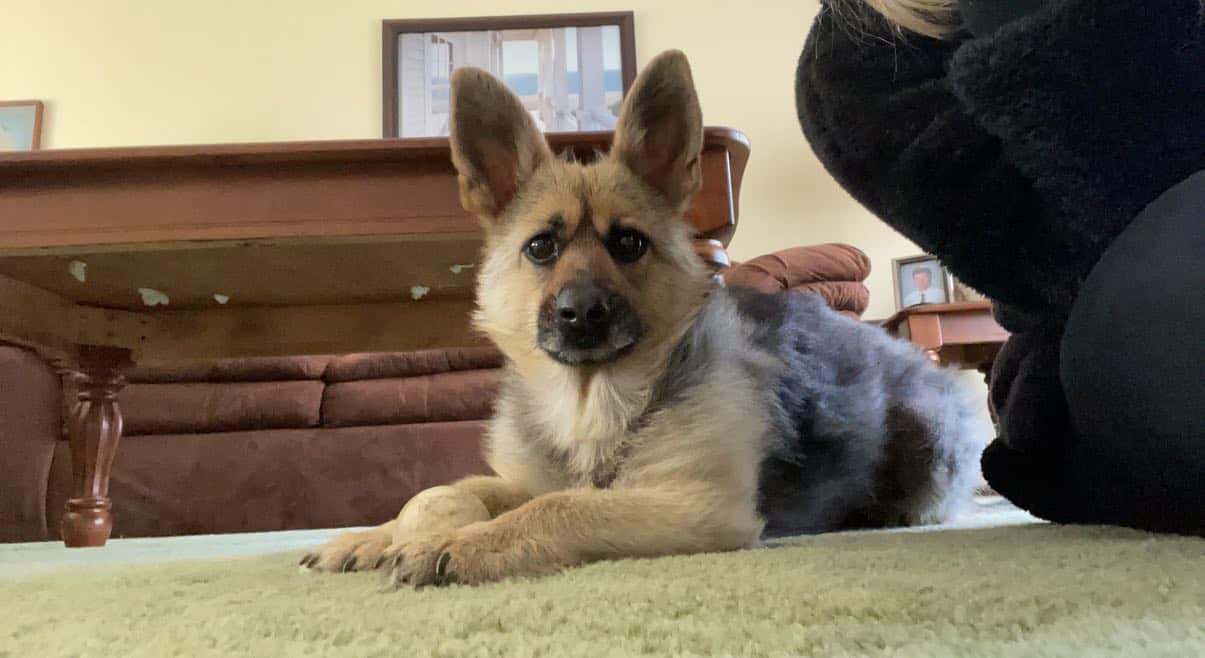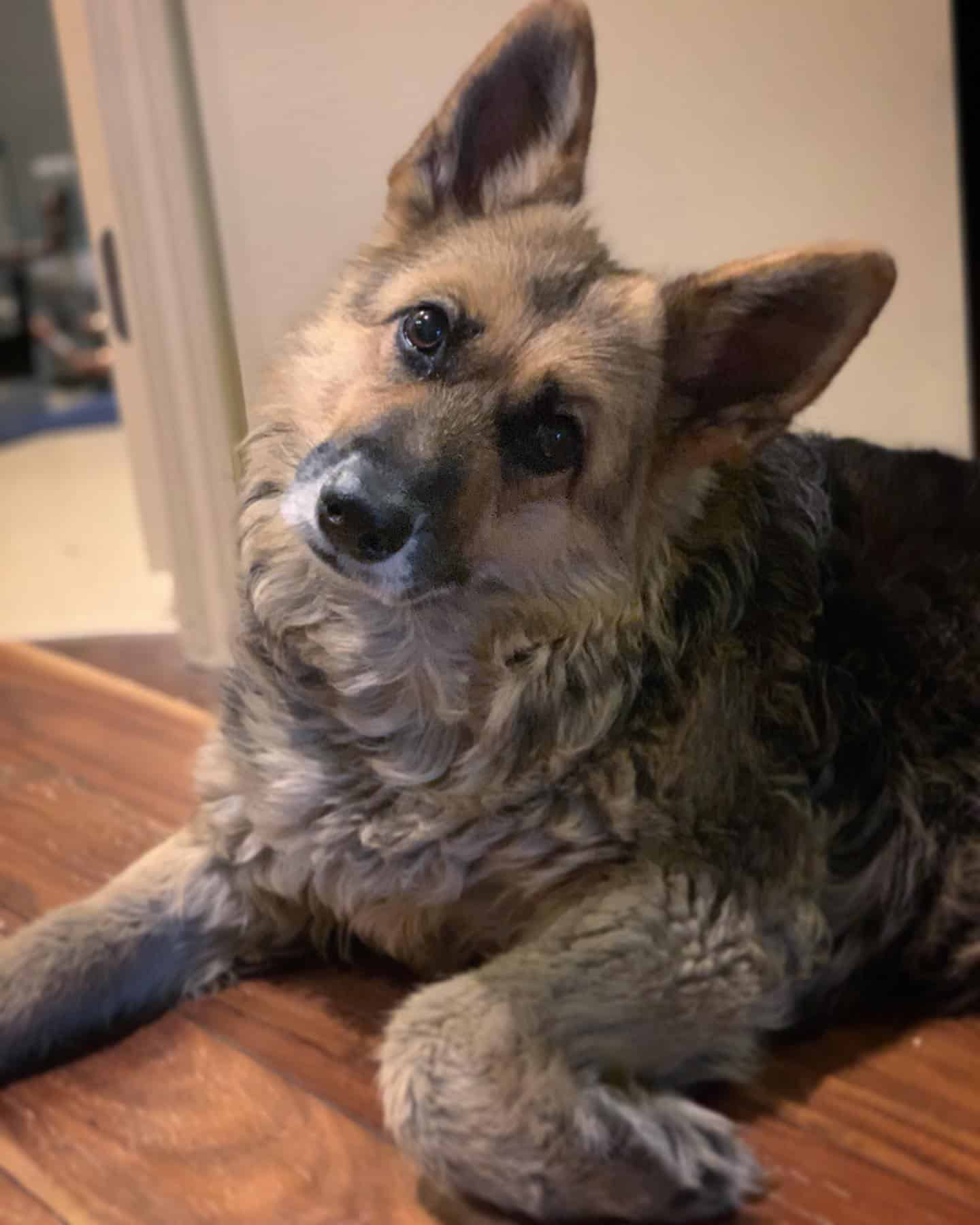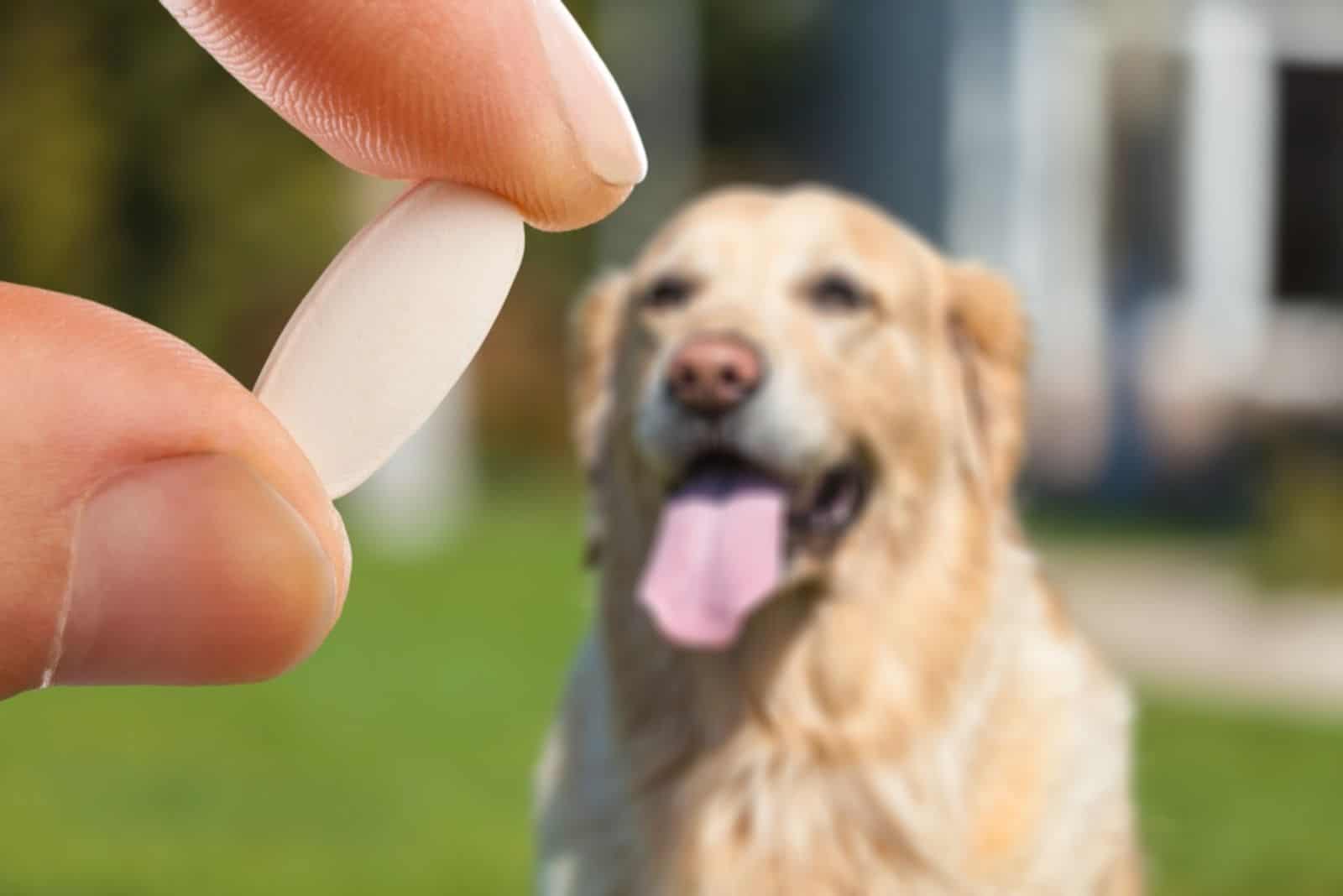Yes, dwarf German Shepherd dogs are a thing.
Have you ever seen a smaller version of any popular bigger dog? Sometimes, we see Huskies walking down the streets that are smaller pups than usual. But, what about German Shepherds? They’re more popular than Huskies. In fact, they’re one of the most popular breeds in the world.
Yes, they come as miniature or dwarf versions.
But, the question is not if they come, but why they come as dwarfs.
Dwarf German Shepherds are normal, purebred German Shepherds with an unusual twist. That German Shepherd puppy is a result of recessive genes that come from both the mom and the dad.
Still, not everything that comes from the parent breeds is considered to be alright. Dwarfism is not a pleasant condition, especially if it’s pituitary dwarfism.
Dogs with this condition tend to have numerous health issues. In addition, they don’t have the same lifespan or life quality as standard German Shepherds.
If you’re interested in learning a thing or two about dwarf German Shepherd dogs, and you want to learn how to treat them, then you’re in the right place.
Keep on reading, and you’ll soon figure out what lies behind a condition called pituitary dwarfism.
Do Dwarf German Shepherd Dogs Exist?

Yes, dwarf German Shepherds really exist. However, their dwarfism is not the same as with other dogs known for their small size. Dogs like Dachshunds and Corgis have achondroplastic dwarfism. They’re small in size, with short and stubby legs, and an elongated body.
You may wonder if there’s any difference between them and dwarf German Shepherd dogs.
Well… there is, and the biggest difference is in the origin of their dwarfism.
Dwarf German Shepherds are puppies that have received two sets of recessive genes that cause dwarfism.
Unfortunately, dogs with pituitary dwarfism don’t just inherit the small size. Numerous health issues come along with this condition.
While it’s natural for Doxies to have a long body, which is not considered a fault, dwarfism in German Shepherds is considered a serious fault. In 99% of cases, pituitary dwarfism is a result of poor breeding practices.
Puppies from puppy mills or from breeders who don’t care about their dogs’ health are often affected by dwarfism. The only thing we can do about it is not to buy from such breeders, and make sure we pick a breeder who actually screens his dogs for health conditions.
What Is Pituitary Dwarfism?

Miniature German Shepherds are not a cool thing, no matter how hard modern society is trying to make them. There’s really nothing cool in a genetic condition that messes up the function of growth hormones.
Miniature German Shepherds are only cute if they’re puppies… not dwarfism versions of standard dogs. I see nothing cute in numerous vet visits and countless health conditions.
A dwarf GSD becomes a dwarf only when both parents transfer the genes to the offspring. If one dog is a carrier, and the other is not, there will be no chance for dwarfism.
However, when both parents are carriers, and you breed them together, they will produce dwarf puppies.
I’ve mentioned that German Shepherds suffer from pituitary dwarfism. Unlike their buddies, Dachshunds, pituitary dwarfism is not something dogs can live with.
So, what is this condition precisely?
Pituitary dwarfism is an autosomal disorder that messes up the pituitary glands. Pituitary glands are small endocrine glands located at the base of the dog’s brain. What these glands do is regulate the most important body functions, like growth, metabolism, blood sugar levels, etc.
Unfortunately, pituitary dwarfism strikes German Shepherds a lot. There’s a study that found about 20% of German Shepherds suffer from this condition.
When you breed two dogs with these recessive genes, 50% of their puppies will be carriers of this condition, while 25% of the litter would have pituitary dwarfism.
Poor breeding practices are usually the ones to blame for pituitary dwarfism. However, there are other reasons why this condition might occur.
Sometimes, a cyst or a tumor could be the reason why a dog’s pituitary gland is not producing enough growth hormones. There might be an infection that was put under control, but it still left consequences.
The bottom line is dogs with this dwarfism should not be bred together to produce even more defected puppies.
Does Dwarfism Affect A Dog’s Health And Lifespan?

As you can imagine, pituitary dwarfism does affect a dog’s health status, and thus, his general lifespan. It might be the reason why your GSD is so skinny.
A German Shepherd dog has an average lifespan of 9 to 13 years. That’s quite a lot for a larger dog. With proper care and regular exercise, a normal GSD could live the maximum of his expected years.
However, a dwarf German Shepherd could never live that long. Sadly, these dogs usually never live past their 5th birthday. Even if they live for 5 years, that’s considered incredibly lucky.
Pituitary dwarfism is something that can be detected as early as before puppies even turn 12 weeks of age. Precisely, this condition can be noticed from birth. One puppy will look odder than his littermates, and that would be the result of dwarfism.
Of course, dwarfism affects a dog’s health status. Puppies with dwarfism are more prone to developing certain health problems like cardiovascular problems, issues with reproduction in both males and females, renal infections, skin issues, breathing problems, etc.
In some rare cases where the pituitary glands still produce hormones, these dogs are able to live for a couple more years. Their health isn’t as terrible as with their other buddies with dwarfism. However, those cases are still pretty uncommon.
Can You Prevent Pituitary Dwarfism?
Yes, there is a way we can put pituitary dwarfism to an end. However, it’s a long-term process, which will require changing the breeding system for good. Still, lots of unreliable dog breeders would not be susceptible to this change.
Changing common breeding practices would mean you’d have to change a man’s opinion.
Pituitary dwarfism is purely a result of poor breeding practices. It’s a genetic disorder that occurs because of inbreeding or lack of care.
Usually, backyard breeders and untrusted people are not paying enough attention to the health of their breeding stock. That’s why they breed ill dogs, and produce puppies with medical conditions such as pituitary dwarfism.
Since this form of dwarfism is a result of recessive genes, it means both parents will have to give recessive genes to their puppies.
The only way of prevention is screening the dogs for genetic conditions. A good breeder should test all of his dogs for genetic problems. Need good GSD breeders? Check here!
If it turns out that a dog is a carrier of some illnesses, he or she should not be used for further breeding.
For example, if it turns out that a sire and a dam both carry recessive genes linked to dwarfism, they should not be bred together.
How To Handle Dogs With Pituitary Dwarfism?

Unfortunately, dogs with pituitary dwarfism will have to be put on a special hormone-replacement therapy for as long as they live.
Dogs with pituitary dwarfism lack hormones, not only those that are affecting their size. A dog with dwarfism doesn’t usually function like other dogs. He will need to take medications; otherwise, his life would be even more complicated.
However, even if a dog takes hormonal supplements, that doesn’t mean he will grow and make up for the difference in size. The hormones will only allow your dog to function better. Still, there are lots of downsides of the mentioned therapy.
The biggest issue with hormone-replacement treatments is their availability and price. There aren’t many treatments available to begin with. Those that are familiar to us are extra expensive, and not affordable to everyone.
Sadly, these treatments are not harmless at all. When a dog keeps on using these treatments, he’s at a high risk of dying from diabetes, tumors, or skeletal deformations. The numerous health issues that come with these treatments are not worth it.
You will end up spending a bunch of money on something that isn’t proven as being effective.
To Sum Up…
The first few weeks of a puppy’s life are crucial. It’s the time when the breeder can figure out whether he has a normal or a dwarf German Shepherd.
Unfortunately, a large number of this dog breed is susceptible or suffering from pituitary dwarfism. Other GSD relatives can have it, too.
German Shepherds suffering from this condition are destined to have a short lifespan. These pups never live past their fifth birthday. What’s even worse is that all of them are suffering from additional health problems that mess up their daily life.
Living with pituitary dwarfism is no joke. It’s a serious condition that puts your dog under lots of stress and pain. There are ways by which you can ease their troubles, but this form of dwarfism is terminal and doesn’t have any major solutions.













